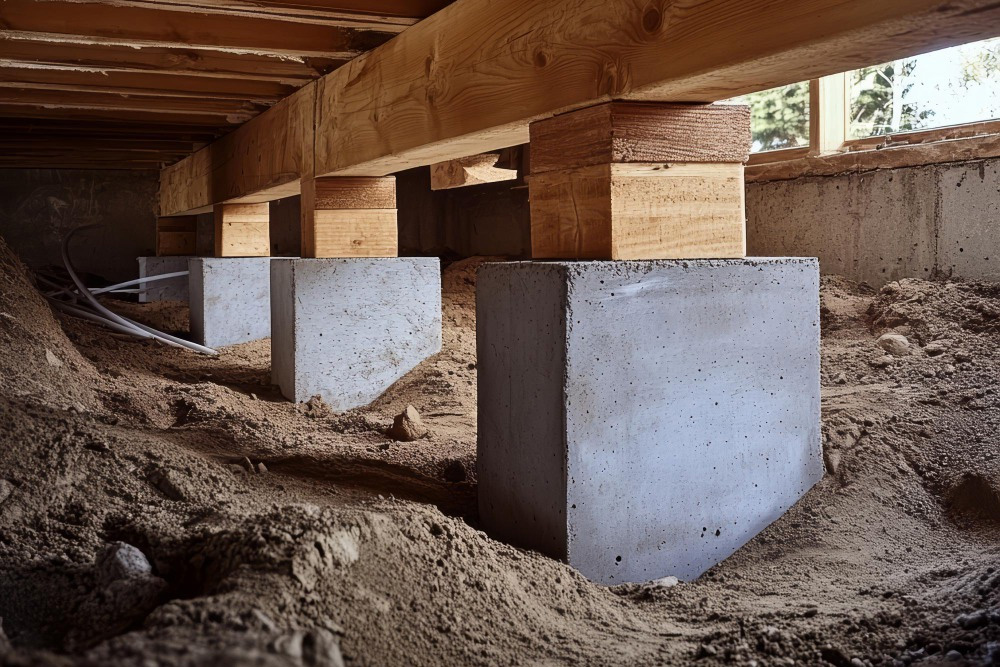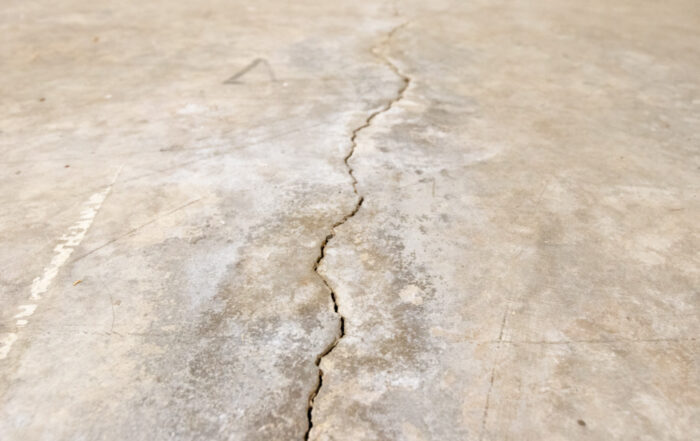Homeowners Guide: Pier & Beam Foundation Maintenance

While pier and beam foundations aren’t as common in modern home builds, they’re still very prevalent, and if your home has one, you need to maintain it regularly. Most homeowners probably don’t even think about their foundation until there’s something wrong. But regular foundation maintenance is beneficial for many reasons, including:
- Avoiding expensive repairs
- Preventing water leaks and damage
- Warding off mold and mildew in the basement
- Upholding the integrity of your home
- Keeping your home from shifting, which causes crooked windows, doors, etc.
At Perma Pier, we can help you repair your foundation when you need it, but it’s up to you as the homeowner to keep it healthy and in good shape. This guide will walk you through some foundation maintenance tips and how to prolong the life of your home and foundation— avoiding costly (and avoidable) repairs.
What Is a Pier and Beam Foundation?
Pier and beam foundations are one of the oldest types of foundations, typically built prior to the 1960’s. With this type of foundation, the floor of the home is elevated around 18 inches off the ground, supported by concrete piers or blocks. This space creates what is typically called a crawl space.
Pier and beam foundations were far more common 60 years ago than they are today. Most homes today are now built on modern concrete structures on account of their low cost and efficient design. But in many parts of Texas, pier and beam foundations are a necessity, especially in areas that experience;
- Heavy rainfall
- Seasonal moisture
- Flooding
Benefits of a Pier and Beam Foundation
There are several benefits to a pier & beam foundation, such as;
- Easy access to plumbing and electrical systems underneath the home
- Protection from flood waters
- Lower energy costs in the hot summer due to better airflow underneath
- More flexibility and mobility
- Ideal for uneven build sites
While it is true that maintenance is key to keeping your foundation healthy regardless of the type, pier and beam homes have unique challenges that homeowners should be aware of in order to have a strong and healthy foundation.
Below are tips on how you can keep your pier and beam foundation in great shape.
Pier & Beam Foundation Maintenance
Keep your pier and beam foundation (or any type of foundation) in good shape by following some of these vital maintenance tips.
1. Look For Pooling Water Around Foundation & Under Crawlspace
The soil in Texas is primarily made of expansive clay soil. It is very similar to a sponge, as it shrinks when dry and expands when wet. The constant hot/cold weather that is typical for Texas means the soil underneath is moving often.
You can imagine how much movement is happening underneath your home. Look around your pier and beam home when it rains and ask, “does water collect underneath the crawlspace and around your foundation?”
Too much water is especially detrimental to pier and beam homes, not just for shifting foundations, but it can contribute to rotting of the wood underneath and possible mildew and mold. If this is the case, you will need to contact an expert on mold removal and look into having the weakened part of your crawl space replaced or reinforced.
2. Inspect Your Gutters and Drainage System
Gutters are often an easy solution and can make a noticeable difference in controlling the moisture level around your home. Not only should you make sure your gutters are properly cleaned and well maintained, but we recommend they extend at least 5 feet away from the foundation, draining away from your house.
This could mean getting a gutter extension which should be easy to find at a local hardware store. It is a relatively easy and inexpensive step that can greatly improve your drainage.
In more serious situations, you might need to look into installing a drainage system, such as a surface drain or French drain. Depending on the home’s situation, we might recommend one over the other after a complete evaluation of your home.
3. Pay Attention to Your Landscaping
Landscaping also comes into play when it comes to accessing the moisture content around a home. Shrubs or flowers that are too close to your home can potentially cause a problem. Some landscaping recommendations include:
- Planting flowers beds so they slope down, away from the house
- Mulching flower beds
- Leave a portion of the foundation exposed
- Don’t plant trees too close to your home. A good rule of thumb is the distance from your home should be farther than the expected height of the tree.
4. Perform Visual Inspections of Your Crawl Space
Your crawl space is probably not something you regularly check; however, looking underneath your home on a regular basis is important. If you ensure these three things happen, you should be in good shape.
- Look at the ground underneath for several months— does it consistently look wet? If that is the case, you can look into installing a heavy-duty liner and dehumidifier. This might be necessary for locations that experience high humidity.
- If your crawlspace consistently looks dry— especially in the hot summer months or during a drought— watering your foundation is important. We recommend installing sprinklers at least 5 feet from the house and making sure the water sprays away from the foundation. The goal is to keep your crawl space dry enough that mold and mildew can’t grow but not too dry that the soil shrinks in the hotter months.
- Crawlspaces should have some holes for ventilation to allow airflow through, but also not a big enough space for animals and rodents to get inside. Animals can cause damage by chewing through the wood and wires. Walk around the perimeter of your home and seal off any holes big enough for animals to come through.
5. Watch for Other Signs of Foundation Movement
What if you have checked out your gutters and drainage, as well as underneath your crawlspace, but are still not sure if you are experiencing foundation trouble? When your foundation is shifting, you usually will see certain tell-tale signs.
Interior Signs:
Walk around your home, going from room to room. Do a thorough inspection that includes:
- Looking for cracks in the walls and around doors might be an indication of movement.
- Notice doors and windows that stick or are hard to open.
- Check for gaps around your door like it suddenly doesn’t fit in the door frame correctly.
- Floor cracks are a common occurrence and many times go unnoticed until flooring repairs are done and the carpet is lifted up.
Exterior Signs:
On the outside of the home, you’ll want to do the same. Watch for the following signs of foundation issues:
- Cracks in the brick. Small hairline cracks usually are not an issue, but any stair-step or vertical crack will need a professional inspection.
- An uneven or detached chimney.
- Gaps in the fascia of your roof.
A regular check on the inside and outside for these signs can help diagnose trouble before it gets out of hand.
Get a FREE Foundation Inspection
Pier and beam foundations are known for being robust and long-lasting, but no foundation is immune from the shifting Texas soil. However, homeowners who are diligent in looking for signs of foundation trouble have the benefit of catching problems before they get out of control.
Putting off foundation repair can be an expensive mistake. If you think you might need a foundation inspection, don’t wait – schedule a free inspection today.



